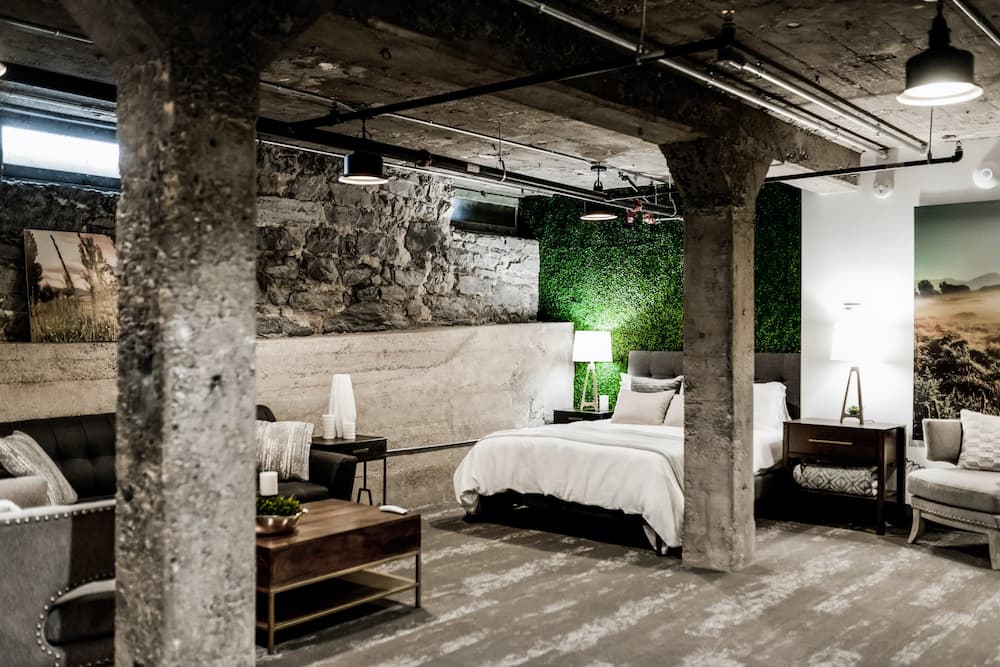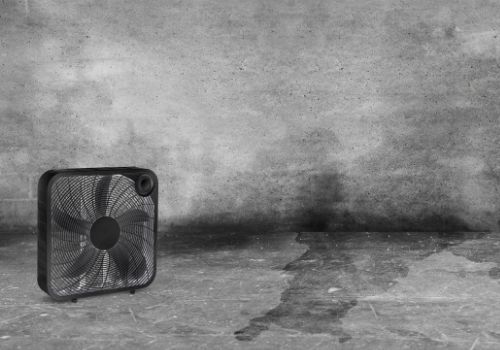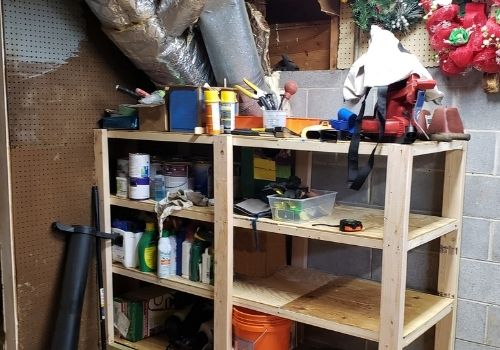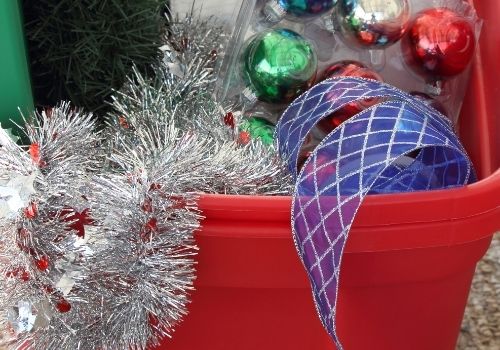How to Organize Your Basement: A Complete Guide in 7 Ingenious Steps

Wondering where to start when trying to organize your basement? You know, the lower level of your home where holiday decorations, old clothes and other extraneous supplies get stashed until you can’t remember where you put them? Some of you may refer to it as “the dungeon,” others “the black hole,” but either way, you are probably hoping to one day scale that mountain of clutter and reclaim your basement in the name of Marie Kondo.
Well, if so, then today is your day! After all, there is no time like the present.
Keep reading to learn how to declutter your basement, overthrow the forces of filth and once and for all transform your basement into a space you are proud of.
Where to Start When Decluttering Your Basement
When attempting to figure out how to clean and organize a basement full of stuff, it’s quite easy to become overwhelmed, stumped or discouraged, even before you get started. However, creating and personalizing your own organization plan can help ward off the stressful side effects of clutter’s dark magic.
Don’t wait to create your plan after you have begun waging war against your basement’s legion of dust bunnies. Draft a plan of action before starting, to be prepared, remain focused and track your progress. Furthermore, you should also take a “before” picture to use later when you compare where you started to your finished basement.
Ready to get started? Consider the following seven steps as a sample basement organization plan!
How to Clean & Organize Your Basement in 7 Steps

1. Take inventory of your stuff & evaluate
If you haven’t cleaned out your basement in a while, who knows what you will find hiding within the various piles of clutter. As you come across items you haven’t seen in some time, place items into three separate categories: 1) keep, 2) donate and 3) trash.
If you come across several items that still hold some value, but you haven’t used in ages, consider donating them or listing them on a resale site. However, if any one of these items is in bad condition or beyond repair, it might be time to throw it out.
Admittedly, letting go of items, especially ones with high sentimental or monetary value, can be hard. This is where the “keep” pile comes into play. You can use this category to organize useful items and others you just can’t part ways with. Just remember, whatever you “keep,” you will also have to store!
Tidy Tip: Make sure if you are listing items for resale, you do so on the appropriate site. Poshmark is great for clothes and accessories, Facebook Marketplace is exceptional for local sales and eBay is a good choice for everything in between.

2. Make sure your basement can handle your storage ideas
Basements, largely due to their subterranean locale, are often damp and prone to mildew and mold. This can make storing sensitive items such as antiques, collectibles and other items challenging. If after you have separated your inventory, you realize you will be storing sensitive items in your basement, it’s important to make sure the space is suitable for such storage.
If you are looking to eliminate excess humidity and dry up your basement, consider purchasing a humidifier, cleaning and painting, and waterproofing areas that are prone to flooding.

3. Choose your shelving units & storage solutions
After you sort your items and prep your basement for storage, next you will need to decide what type of shelving units you would like to utilize. Overall, metal shelving units are a great way to take advantage of vertical space and wall storage and maximize the carrying capacity and tidiness of a basement.
In general, there are two different types of metal shelving units: standalone shelving and mounted shelving. Each of these two shelving styles has its own pros and cons, which are displayed in the table below:
| STANDALONE SHELVING | MOUNTED SHELVING | |
| PROS | Can hold more weight No mounting worries | Takes up less space Can be mounted to take advantage of unused wall space. |
| CONS | Takes up more space Often units need to be assembled | Limited weight capacity Units need to be mounted securely and safely. |
Depending upon your garage’s layout and the items you need to store, one shelving unit type may be more helpful than the other. If you are looking to store heavier items, you may want to choose a standalone shelving unit, whereas to take advantage of unused wall space you will want to utilize a mounted shelving unit.
4. Categorize your items & store accordingly
Once you have your shelving units assembled, it’s time to categorize your “keep” items and store like items together and near each other. A great way to accomplish this task and effectively arrange your items is to store items by season or use. For example, you can store decorations and extra clothes by season and then store sporting equipment and camping equipment in the same vicinity.
Achieving this level of organization will not only help you store more, but will also make items easy to find and retrieve when needed. Consider purchasing plastic bins and storage containers to store like items together easily.

5. Effectively store items using plastic bins
Before purchasing plastic bins, storage containers or even cardboard boxes, make sure to measure your shelving units to see what size will fit. Once you have your storage containers on hand, place your organized items into categorized bins. Then, take a magic marker or label maker and label each container for easy item location.
If you are undecided on what type of storage container to purchase, we recommend clear, heavy-duty plastic bins. These see-through containers will allow you to locate items more easily. However, if organizing on a budget, cardboard boxes or any other container you have laying around the house can work, too.
Tidy Tip: When labeling with a magic marker, don’t write directly on the box or container. Cut out a piece of paper or make a label from other materials so that you can reuse the box to store other items in the future if needed.
6. Free up other areas of your home
Now that you have shelving units, storage containers and have organized all of the items in your basement, consider decluttering other areas of your home. Obviously, you won’t want to store too much in your basement if you don’t have the room, but if you still have space on your shelves, tackling your closets or pantry might be possible.
When moving canned goods, extra clothes or other items from your closet (check out our small closet organization guide), pantry or other areas of your home, remember to follow the same storing steps as you did for your basement inventory:
- Take inventory & evaluate
- Separate items into “keep,” “donate” and “trash”
- Store like items in containers
- Label containers
7. Take a step back and look at your finished basement
This is the easiest step, but also the most enjoyable. Take a moment to look at your hard work and appreciate where your basement started and how it looks now. Take an “after” pic to compare with the picture you took before starting to declutter your basement. If you’re especially proud, share it on your social media accounts!
Basement FAQs
Q: How do you organize a cluttered basement?
A: To effectively organize a cluttered basement, you should start by drafting an organization plan and personalizing it to your basement’s layout and inventory. Next, you should take inventory of your items and divide the items into three categories: keep, donate and trash. After you have your items separated, you should consider preparing your garage for storage by eliminating humidity and any potential flooding. Next, purchase shelving units and storage containers to effectively organize your items by season and category. Finally, store like items near each other, and place storage containers or plastic bins on the various shelving units.
Q: What is the fastest way to declutter a basement?
A: The fastest way to declutter a basement is to remove all unnecessary items and organize the remaining items into appropriate categories. Consider purchasing pre-assembled shelving units to save time as well.
Q: What should you not put in your basement?
A: If your basement is super humid or prone to leaks, you shouldn’t store any sensitive items, antiques, or collectibles. In this situation, you can attempt to make your basement better suited for storage by installing a dehumidifier, applying mold-retardant paint and waterproofing primer, and waterproofing any potential leaks. However, your best bet is to rent a professional self-storage unit.
Q: How do you store things in the basement?
A: Basement storage is achievable in many ways. The first step is to make sure your basement is suitable for storage. This means preventing excessive humidity, mold and mildew. Once you are confident your basement is suitable, you can purchase shelving units and storage containers to effectively store your items. Consider storing like items together and organizing items by category for easy-to-find identification later.
Wrapping Up: How to Organize Your Basement
Hopefully, this basement organization guide has been helpful and informative. If you have already completed your basement transformation, congratulations. If you are still working on it, don’t worry, you got this!
Once you do get your basement organized and eliminate clutter once and for all, share your before and after pictures with us on Instagram or Facebook!
Free Up Your Basement with Store Space!
Still have too much left in house to organize your basement effectively? Don’t worry, we can help with that as well. We offer professional storage at affordable prices at multiple facilities across the nation.
Looking for the facility closest to you? Use our storage location finder to find the Store Space facility closest to your basement!






